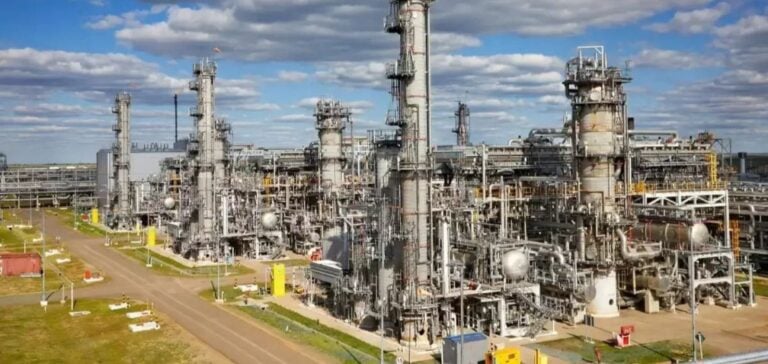Kazakhstan’s Karachaganak oil and gas condensate field, one of the country’s largest, has reduced natural gas condensate production following an incident at Russia’s Orenburg gas processing plant. According to the operating consortium, the reduction is linked to an “accident” at the Orenburg facility, which plays a critical role in processing Kazakh gas exports.
Immediate impact on production volumes
Two industry sources reported that Karachaganak’s output has dropped by 25 to 30 % compared to usual levels. Daily volumes have fallen from around 35,000 to 35,500 tons to approximately 25,000 to 28,000 tons. The sharp decrease follows the partial shutdown of the Orenburg plant, which handles a significant share of Karachaganak’s condensate prior to export.
Kazakhstan’s Ministry of Energy confirmed the reduction in output but did not provide specific figures. The ministry indicated that normal production levels are expected to resume once Russian operations return to standard capacity. No timeline has yet been given for the restart.
Drone strike exposes supply chain vulnerability
The incident was caused by a Ukrainian drone strike targeting the Orenburg facility, located 1,700 kilometres east of the Russia–Ukraine border. The plant is one of the world’s largest gas processing complexes and holds a strategic role in routing Kazakh gas.
Karachaganak’s reliance on Russian infrastructure for condensate processing highlights the regional energy supply chain’s exposure to geopolitical tensions. Operators are monitoring the situation and may adjust output levels further depending on the status of Russian facilities.
International consortium faces risk exposure
Karachaganak is operated by Karachaganak Petroleum Operating B.V., a joint venture including Eni (30.25 %), Shell (29.25 %), Chevron (18 %), Lukoil (13.5 %), and Kazakhstan’s national energy company KazMunayGaz (10 %). The partnership reflects the interdependence between Western and Russian companies in Central Asia’s energy sector.
None of the involved companies have disclosed potential financial losses or contingency plans to safeguard medium-term output.






















